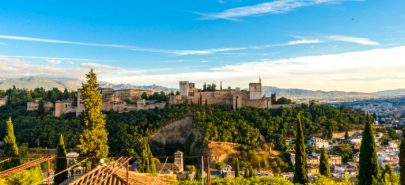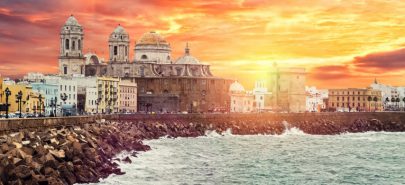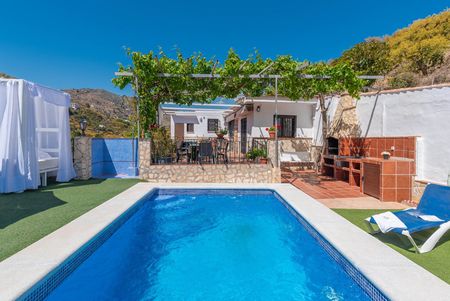During the summer months, Malaga comes alive with some of its most cherished festivals, an ideal way to discover the true spirit of the region beyond its beaches. If you’re lucky enough to visit the province between August and September, get ready to experience a vibrant mix of music, culture, tradition and local flavour.
Here’s a quick guide to help you find the festival that suits you best this summer in the province of Malaga:
Festivals in Malaga’s villages in August
· Virgen de Gracia in Archidona
· Los Verdiales in Villanueva de la Concepción
· Virgen de la Fuensanta (Pizarra)
· Casetas at the Feria de Málaga: tips and advice
Festivals in Malaga’s villages in August
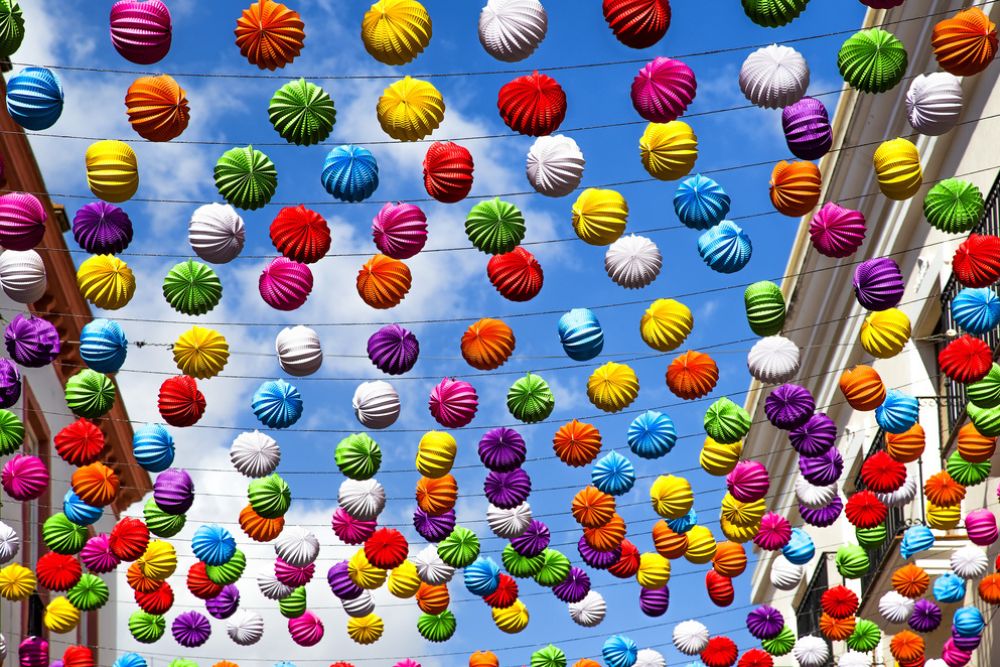
Virgen de Gracia in Archidona
This traditional nighttime romería and local fair, held from 14 August, honours the patron saint of Archidona, a charming white village in the heart of Malaga province. It’s a deeply rooted celebration that blends devotion, processions, live music and local food.
Around the sanctuary, you’ll find open-air masses, concerts and popular evening dances. The whole village gets involved, decorating the streets and dressing up in their finest for the occasion.
Los Verdiales in Villanueva de la Concepción
During the first week of August, Villanueva comes alive with pandas de verdiales, groups that perform one of the oldest folk traditions in Andalusia. This unique music, believed to have roots in pre-Roman harvest rituals, is played with violins, tambourines and guitars. The performers wear striking hats decorated with flowers and colourful ribbons.
In the afternoon, the groups tour local bars and squares, playing lively tunes. At night, the main square hosts a spirited competition, with large screens set up around the village so everyone can follow the action. It’s not just a performance but a heartfelt celebration of music and local identity.
Want a better sense of what verdiales are all about? Although not filmed in Villanueva, our Instagram reel from the Día del Níspero in Sayalonga captures the vibrant energy and sounds of this centuries-old tradition.
Virgen de la Fuensanta (Pizarra)
In mid-August, the town of Pizarra honours its patron saint, the Virgen de la Fuensanta. The celebrations begin with the traditional procession bringing the Virgin down from the sanctuary, marking the start of the local fair.
The event combines religious devotion with street festivities, music, and family-friendly attractions throughout the village.
Feria de Málaga
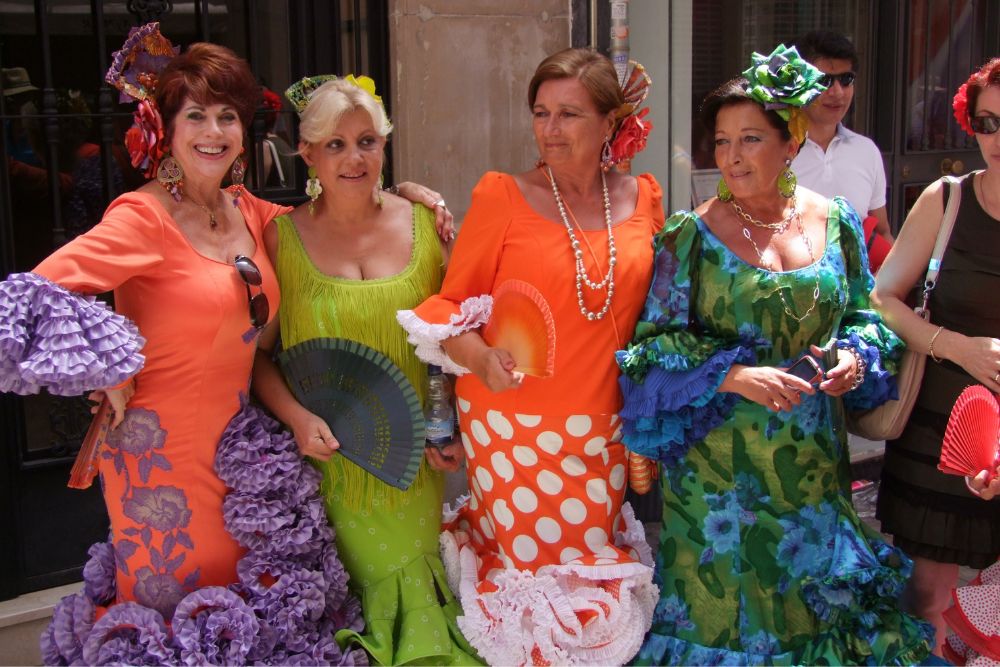
To close the month, we couldn’t leave out the region’s most iconic festival, even though it’s not held in a village. Held in the capital, the Feria de Málaga transforms the city into a week-long open-air party that rivals any in Andalusia.
By day, the historic centre bursts with colour and rhythm. Horse-drawn carriages pass along the cobbled streets, locals in traditional flamenco dresses share sweet wine in shaded plazas, and live music fills the air.
When evening arrives, the celebration moves to the Real del Cortijo de Torres. Food stalls sizzle, fairground rides light up the night, and free concerts keep the party going until well after midnight.
Casetas at the Feria de Málaga: tips and advice
Not sure where to start? Look for casetas like the municipal “El Rengue”, perfect for older visitors and known for its traditional flamenco performances. Or try “El Pimpi”, ideal for tasting Malaga’s famous sweet wine. All casetas at the Feria de Málaga are open to the public, so you’re free to walk in and enjoy.
Festivals in Malaga in September
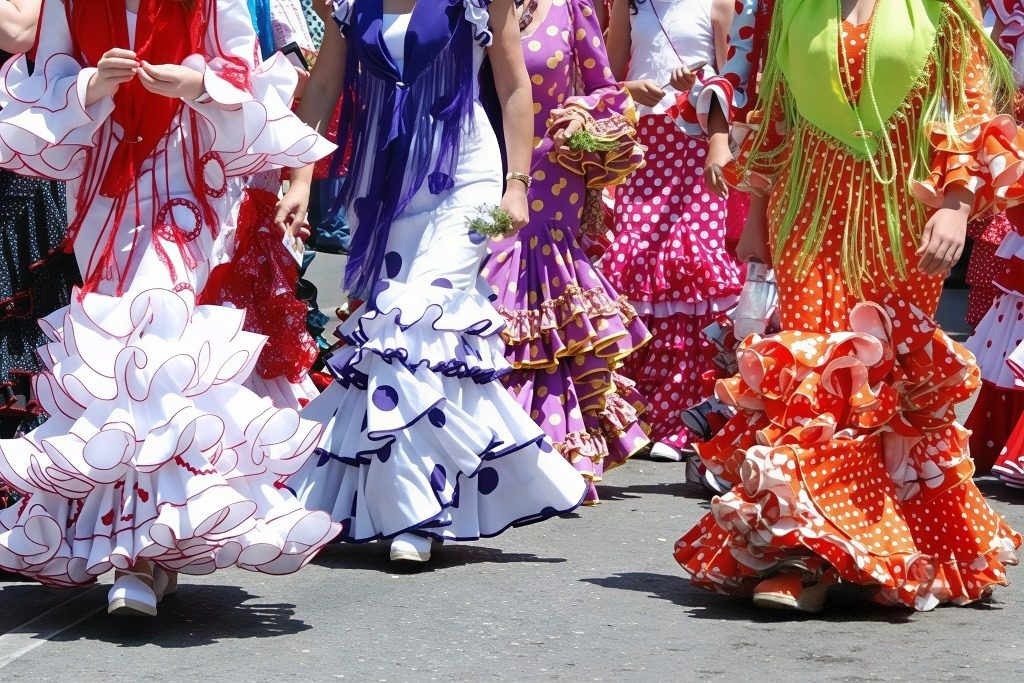
Many small towns across Malaga hold their own festivals in September, but here are two events where you’ll see real excitement and devotion on the faces of the locals.
Feria de Mijas
In the first week of September, Mijas Pueblo dresses up to celebrate its fair in honour of the Virgen de la Peña. The whitewashed streets, colourful lanterns and live music create a warm, joyful atmosphere.
It’s a friendly, laid-back fair, perfect for those looking for something more relaxed but just as authentic as the larger festivals in other towns across Malaga.
Día de la Victoria
To finish our tour of local festivals, we return to Malaga city for a day that honours its patron saint with a mix of religious and cultural events. While more solemn than the Feria, the day still includes performances, flamenco masses and outdoor activities spread throughout the historic centre.
It’s a great chance to experience Malaga from a local perspective, with tradition and community spirit at the heart of the celebration.
Want to enjoy these festivals from up close? Find your ideal holiday home with Ruralidays and stay near each event so you won’t miss a moment of the most authentic Andalusian summer.
Frequently asked questions about summer festivals in Malaga’s villages
What kind of festivals take place in Malaga in summer?
From a major fair in the city to small village celebrations in places like Villanueva de la Concepción, Coín or Archidona, you’ll find romerías, local markets and traditional music festivals throughout the province.
Are these festivals suitable for children?
Absolutely. Many activities are designed for all ages, especially in village fairs like Mijas, which offers family-friendly casetas and fairground rides for the little ones.
Do you need a ticket to enter the casetas at the Feria de Málaga?
No, all casetas at the Feria de Málaga are free to enter. You can walk in, enjoy the music and dance without needing an invitation or paying a fee.
Where’s the best place to stay during the festivals?
It’s best to book early and look for accommodation that’s close to the event but far enough to enjoy a good night’s rest. On Ruralidays, you can filter by location, dates and type of property to find the perfect holiday home.
Are festival dates the same every year?
Not always. Most are held around the same time each year, but it’s worth checking the official local calendar every summer to confirm the exact dates.
If you’re visiting Andalusia this summer, let Malaga’s festivals guide you into the region’s most heartfelt traditions. These celebrations unfold not on grand stages but in village squares, narrow streets and the warm company of the people who keep them alive.

